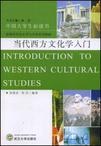当代西方文化学入门
出版时间:1970-1 出版社:武汉大学出版社 作者:彭保良,刘岩 著 页数:187
Tag标签:无
前言
我们所处的时代是一个多元共生的时代。国际政治的多极化走向、经济的全球化趋势、社会的信息化局面以及文化的多元化态势正快速改变着我们的生活。科学技术的高速发展以及新兴学科的不断涌现加剧了世界各国文化的交流、碰撞和合作。如何培养适应新时代发展和需要的人才,这是我们这一代教育工作者面临的新的课题和挑战。 高等学校外语专业教学指导委员会英语组于2000年3月修订的《高等学校英语专业英语教学大纲》明确规定了高等学校英语专业的培养目标:“高等学校英语专业培养具有扎实的英语语言基础和广博的文化知识并能熟练地运用英语在外事、教育、经贸、文化、科技、军事等部门从事翻译、教学、管理、研究等工作的复合型英语人才。”这样的描述为我们编写英语专业教材和组织英语专业教学提供了重要依据。我校在长期的外语教学和研究实践中践行“明德尚行,学贯中西”的校训,着力推进外语与专业的融合,致力于培养一专多能、“双高”(思想素质高、专业水平高)、“两强”(外语实践能力强、信息技术运用能力强)、具有国际视野和创新意识的国际通用型人才。这要求全面提高学生的综合素质,包括拓宽人文学科知识,加强人文素质,培养创新精神,提高独立分析问题和解决问题的能力。
内容概要
《当代西方文化学入门》内容分为两大部分,每部分六个篇章/单元,而每个章节以介绍引进西方文化研究的理论为主。从教学的角度考虑,第一部分(六章)可以当做主课文使用,因为课文的导读、难度、长度和(中文)注释都是按照多年积累的教学经验编写的,比较有针对性。每篇课文之后都附有至少五个阅读理解或供学生讨论的问题,以帮助学生抓住要点、难点和重点。《当代西方文化学入门》的第二部分是增补材料,可作为副课文使用。编辑这部分的内容主要出于以下考虑:增加第一部分主课文的信息量;提供更深程度的理论知识;扩大学生相关领域的知识面;为深入学习文化研究的学生提供更多的素材。第二部分每个单元的内容与第一部分每个章节的内容相对应,共六个单元。课文的深度、广度和长度都有所增加,有些理论的阐述甚至是英语原文。《当代西方文化学入门》的适用对象是英语专业的本科学生,也可作为自学文化研究理论的入门材料。
书籍目录
第一章 基本概念第一节 导读:文化的定义和作用Passage OnePassage Two第二节 导读:通俗、大众和高雅文化Passage第三节 导读:文化研究Passage OnePassage Two第二章 符号和文化第一节 导读:表征、对话、话语Passage第二节 导读:读、写、文本Passage第三节 导读:定型模式Passage OnePassage Two第三章 后殖民主义第一节 导读:殖民主义定义Passage第二节 导读:马克思、列宁主义的殖民观Passage第三节 导读:后殖民主义及其批评Passage OnePassage Two第四章 种族、族性:全球化和身份第一节 导读:身份、全球化Passage OnePassage Two第二节 导读:种族和族性Passage OnePassage Two第五章 性别第一节 导读:关于性别的基本概念Passage OnePassage TwoPassage Three第二节 导读:特殊性别身份与同性恋Passage OnePassage Two第三节 导读:女性主义的发展历程Passage OnePassage Two第四节 导读:性别与文化再现Passage OnePassage Two第六章 现代性和城市空间第一节 导读:现代性Passage OnePassage Two第二节 导读:城市空间Passage OnePassage TwoPassage ThreeSupplementary Reading MaterialsUnit 0ne CulturePassage OnePassage TwoUnit Two Semiotics and CulturePassage OnePassage TwoPassage ThreeUnit Three PostcolonialismPassage OnePassage TwoUnit Four Globalization and IdentityPassage OnePassage TwoPassage ThreeUnit Five GenderPassage OnePassage TwoUnit Six Modernity and Urban SpacePassage OnePassage TwoBibliography
章节摘录
Passage Two Giobalization and Identity 1. What globalization had definitely contributed to was the erosion of the "master identities" such as, for example, citizenship in the abstract meaning of membership in the territorially defined and state-governed society, and its replacement by an identity based on ethnicity, race, local community, language, and other "local" and culturally concrete forms. In other words, the trends towards unification that were exacerbating during the past decades in turn provoked the appreciation of the role and importance of the opposing trends towards the specific and the local. 2. One of the explanations of these contradicting tendencies may be as follows: though the process of globalization undermines the traditional perception of locality as a bounded space characterized by a framework of close relations based upon kinship ties and length of residency since it diminishes the intensity of day-to-day contacts and overall involvement into communal activities, it seems to have a different kind of influence on another dimension of "locality"--that is, various rituals, ceremonies and collectivememoriesthat bindthepeopletogether. AsMike Featherstone argues,thisistheprimaryfactorthatfostersthe sustainabilityofthecommunaltiesbecauseitistheuseof commemorative rituals andceremonies that can be understood as batteries that store and recharge the sense of communality when one is apart from the regular calendar of ceremonies.
图书封面
图书标签Tags
无
评论、评分、阅读与下载
用户评论 (总计0条)
推荐图书
- 中华语文大典 新课标最新小学作文15个知识点训练 六年级
- 新课标小学语文阅读题典
- 新课标小学语文阅读题典
- 新课标小学语文阅读题典
- 新课标·语文阅读
- 新阳光语文阅读 新课标初中语文阅读题典 七年级
- 新阳光语文阅读 新课标初中语文阅读题典 八年级
- 新阳光语文阅读 新课标初中语文阅读题典 九年级
- 新课标语文探究与创新阅读
- 新课标语文探究与创新阅读
- 新课标语文探究与创新阅读
- 新课标语文探究与创新阅读
- 新课标语文探究与创新阅读
- 新课标语文探究与创新阅读
- 新课标语文探究与创新阅读
- 新课标语文探究与创新阅读
- 中外文学名著导读-新阳光语文阅读
- 四大名著精彩导读与达标训练
- 新阳光语文阅读 最新小考阅读满分卷详解
- 最新中考阅读满分卷详解
- 最新高考阅读满分卷详解
- 新课标小学英语阅读周计划·三年级
- 新课标小学英语阅读周计划·四年级
- 新课标小学英语阅读周计划·五年级
- 新课标小学英语阅读周计划·六年级
相关图书
- 逻辑与计算机设计基础实验与课程设计
- 高职高专成教英语应用能力考试真题解析与模拟训练
- 外企白领应用英语口语
- 电力营销技能考核试题库
- 地理
- 状元笔记教材详解
- 九年级思想品德(全一册)
- 状元笔记教材详解
- 高中数学教材基础知识全解
- 高中历史教材基础知识全解
- 高中政治教材基础知识全解
- 伊索寓言
- 绿野仙踪
- 鲁滨孙漂流记
- 爱的教育
- 福尔摩斯探案集
- 成长文库 世界少年文学精选
- 八十天环游地球
- 汤姆·索亚历险记
- 成长文库 世界少年文学精选
- 小王子
- 我为车狂之运动玩家
- 中华语文大典 新课标最新小学作文10个知识点训练 三年级
- 中华语文大典 新课标最新小学作文12个知识点训练 四年级
- 中华语文大典 新课标最新小学作文14个知识点训练 五年级
